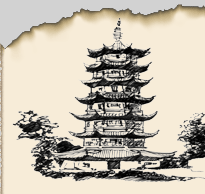


|
The first type of the Chinese abacus (swan pan) has been known since the 6th century. It looked like a rectangular board. The board was separated into cells and ten horizontal stripes. One-colored counters were place onto there. The construction of this device has been changed step-by-step. The quantity of horizontal stripes was reduced up to five and then the counters became two-colored. Later a horizontal bar appeared. This bar separated the board into two parts. The upper section was called “heaven” and the lower section was called “earth”. Every counter in the lower section was equal to one unit and every counter in the upper section was equal to five units. Finally, the swan pan looked like a small prolonged shallow wooden frame separated by a bar into two unequal compartments. Bamboo sticks ran through this frame and were stuck by the ends to the opposite deeper walls. Sometimes the hieroglyphs were written on the upper side of the border corresponding the value of one line. The same principle was used for the slits on the Roman abacus, each device having vertical lines. Both the Roman abacus and the swan pan are placed in such a way that the longest side is opposite a counting man. All sticks in the wide part of the box have five beads with the range from one unit up to five. Above the the bar on the same sticks there are two more beads corresponding “two fives”. According to the descriptions and drawings existed at the end of the 17th and 18th centuries the swan pan hasn’t been changed at all for the last 300 years.
|





